Is it always OK to put softened butter back in the fridge?
For the best baking success, here's the deal on saving softened butter for later.
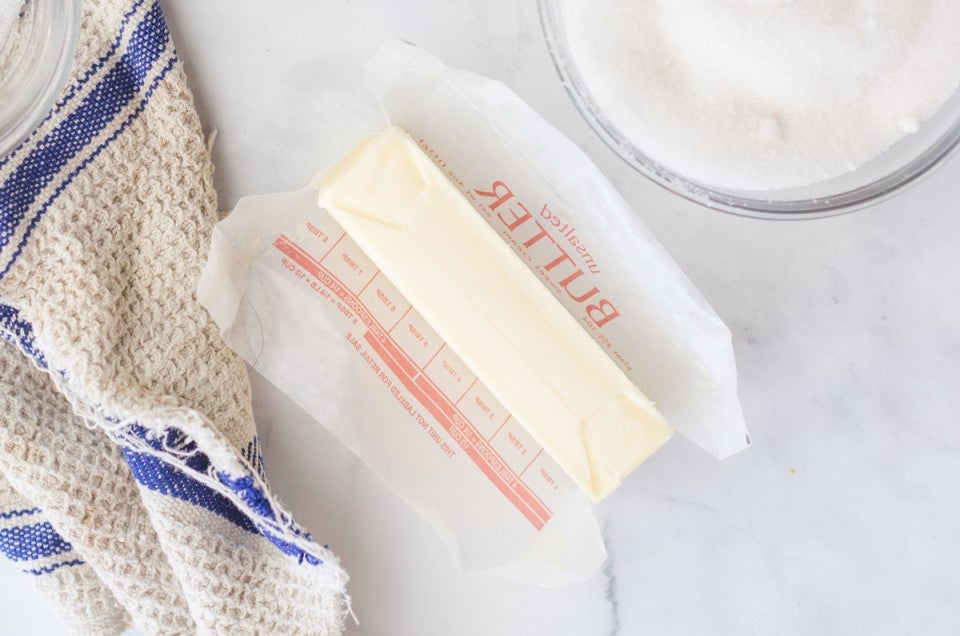

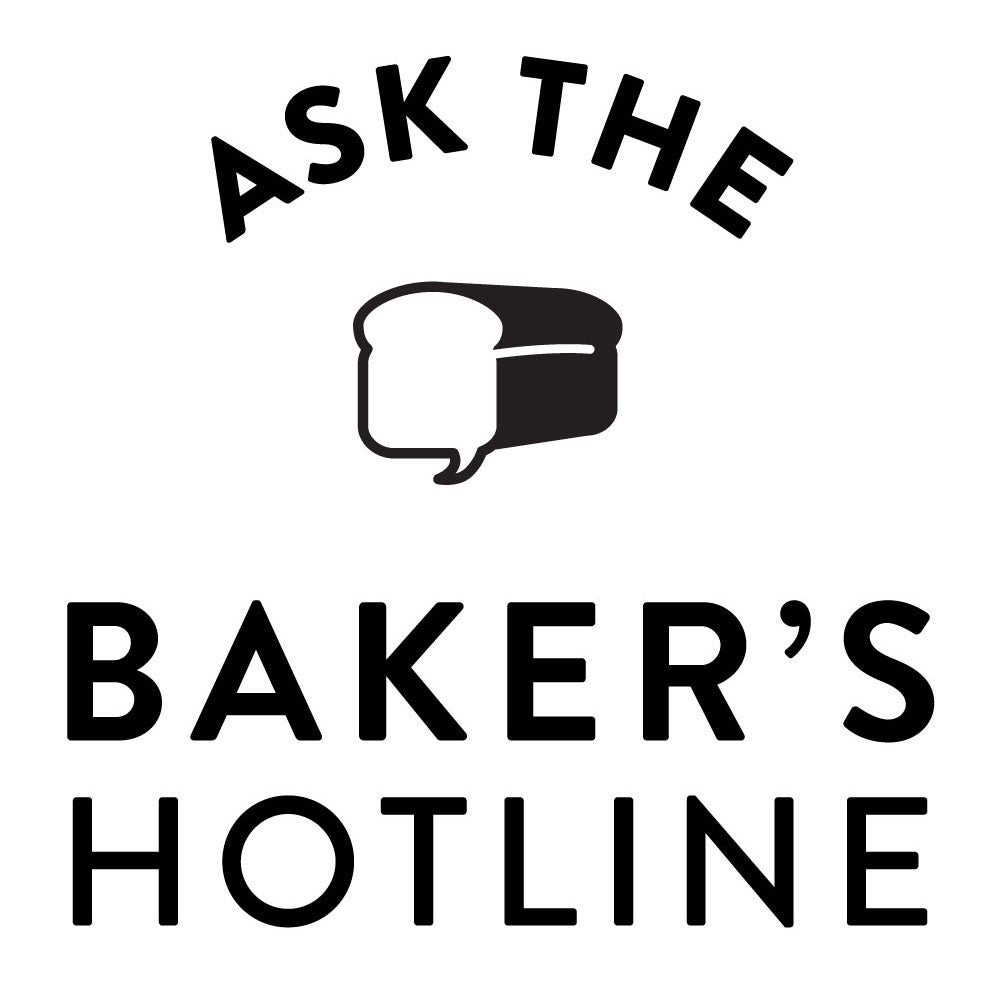 The bakers of King Arthur are here to solve the kitchen conundrums you share with us, whether it’s on the phone, computer, or by the good old postal service. In Ask the Baker’s Hotline, Annabelle will pick the brains of the talented King Arthur Baker’s Hotline team to tackle some of your most-asked questions.
The bakers of King Arthur are here to solve the kitchen conundrums you share with us, whether it’s on the phone, computer, or by the good old postal service. In Ask the Baker’s Hotline, Annabelle will pick the brains of the talented King Arthur Baker’s Hotline team to tackle some of your most-asked questions.
* * *
Baking season is in full swing, and that means we’re making cookies, cakes, and bread galore. Since many of these recipes call for softened or room-temperature butter, you might find yourself with some leftover and wondering if it’s OK to put back in the fridge. Or maybe you had plans to bake and set your butter out, but then something came up and you had to postpone. Can you refrigerate butter after it has been softened?
Ryan from our Baker’s Hotline is here with the answer.
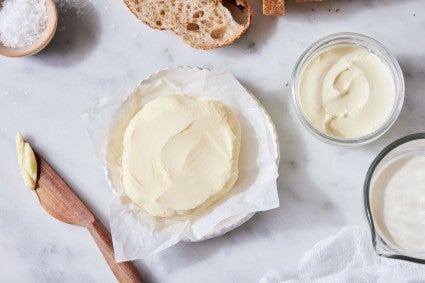
You sure can! But as with any dairy product, there are always precautions to take.
The USDA recommends keeping butter at room temperature for no more than two days to prevent spoilage. Salt is a preservative and can lengthen the shelf life, but for the sake of this article, we’re talking about unsalted butter. (It’s more appropriate for baking and is the type called for in most King Arthur recipes.)
“If the butter has only been on the counter at room temperature for a few hours or overnight and has maintained a temperature below 70°F, it should be just fine to place back in the fridge,” says Ryan. “You may not notice a difference in the performance of the butter when you eventually use it, other than the wrapper being a bit wet or soft. Food safety-wise, it’s still good to use.”
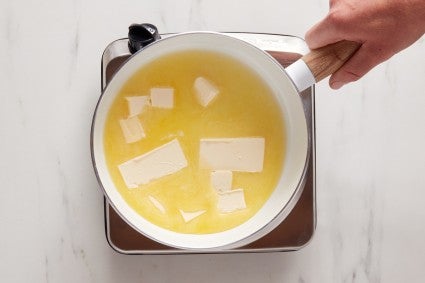
“If the butter became very soft or started to melt during its time on the counter (or in the microwave if you were speeding up the process), you can put it back in the fridge, but it may not be the best to use in your recipe,” Ryan suggests. “You may notice when it solidifies that it’s separated or grainy. The water, fats, and solids in butter are an emulsion, which can break when melted and re-solidified.” If your recipe depends on butter to create air or structure, like a cake that calls for creaming butter and sugar, you’ll want to start over with new butter.
“If you used that butter in a recipe requiring creaming, the air you incorporate wouldn’t be as stable since the structure of the butter has changed,” Ryan says. “Your baked goods may not rise properly, and frostings may be soft and loose. Is it still safe to use? Food safety-wise, yes. But structure-wise, perhaps not.”
That butter can still be used for other things though! Extra-softened or even melted and re-solidified butter will still work perfectly to spread on toast or pancakes, to be made into brown butter, or to remelt and use in recipes calling for melted butter like a Graham Cracker Crust.
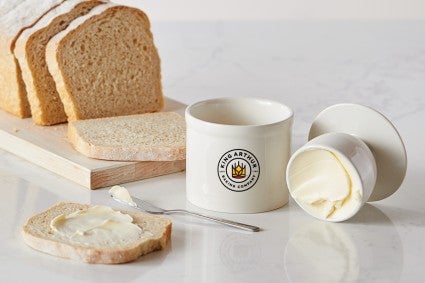
If your butter has been unrefrigerated for more than two days, you run the risk of it going rancid. As Ryan says, “There is no coming back from rancid butter.” It has a distinctly unpleasant flavor and a noticeable rancid smell that carries over into baked goods. It’s best to dispose of the butter if this happens.
But what if you want to keep your butter at room temperature for days at a time to slather on your morning toast? Ryan recommends storing your butter in a butter keeper if you want to leave it on the counter. “The water in the base of the jar creates an airtight seal, helping prevent the butter from spoiling. So long as it is stored away from direct heat and light, the butter in a container like this will be fine for a few days. Be sure to replace the water often and clean the container before filling again.”
“When working with butter in a recipe, I like to bring out and soften only the amount that is needed for what I am working on. That way, I don’t end up with extra butter that won’t be used right away,” he says. “Repeatedly moving butter from the fridge to the counter and then back invites spoilage and poor performance.”
In a rush? To soften your butter more quickly, Ryan advises, “Cut your butter into pats and place them on a plate in a single layer at room tempertaure. More surface area means that the butter will soften a bit faster!”
Use your newfound butter knowledge to make one of our holiday favorites: Holiday Butter Cookies.
Cover photo by Anne Mientka.


